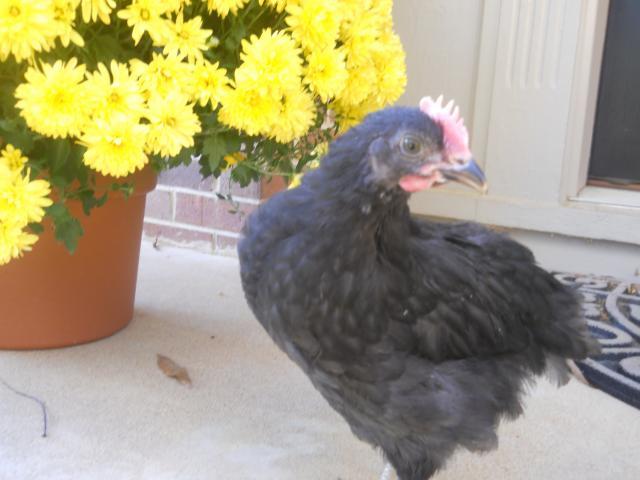Quote:
>>>>>>>>>>>
Hi,
They are probably Austoralorps, but may be mixed.
Ethel looks like a pullet and Greta has some Cockeral looks--Maybe some saddle feathers and a longish tail.
They are a bit young to tell for sure so I will keep hoping Greta is a she.
Ron
I've been wondering about Greta being a boy since she was slow to grow. I've read a lot of stories where people had that happen and ended up with a roo. But the two look so similar in person now. I go back and forth on Greta being a Greta or Greg. Unfortunately, if she's a Greg, he'll have to find a new home.
They really do change a bunch up to six months of age.
I found this guide a while back. I have posted it before but will post it again:
Examine the blade of the comb which is the lobe-like area at the rear of the comb. Roosters have rounded blades nearly half the length of the comb. Female Australorp chickens have combs that only cover two-thirds of the head and end in a sharp point.
Check the red waddle of the bird. The Australorp rooster has a waddle that is longer than it is wide. The Australorp hen has a waddle that is wider, or as wide as, it is long.
Examine the neck plumage of the chicken. Males Australorps have pointy neck plumage that cascades over the shoulder and down to the beginning of the wing. Female neck plumage reaches the shoulder and is rounded.
Observe the tail of the chicken. The tail feathers of male Australorp chickens cascade in a soft rounded waterfall effect. Australorp hens have blunt, short tail feathers.
Listen to the birds. The roosters will crow while the hens do not.
best method is by observing the chicks' behavior. Startle the chicks by sailing a hat or similar soft object over their heads and watch their reactions. The cockerels will instinctively stand erect with their heads upright and will emit a peculiar warning chirruping sound. The pullets will tend to crouch down low and remain silent.










